Explore the Diversity of Japan's Noodle Culture, Including Tohoku's Regional Noodles
Rice is a staple dish in Japanese cuisine. However, Japanese people also love noodles such as soba, udon, ramen, and pasta! Each noodle dish is said to have originated overseas, but once in Japan, it developed independently to suit the climate, culture, and local characteristics of each region, giving rise to a wide variety of local noodles.
In particular, various cities in the Tohoku region are known as major noodle consumption areas, boasting the highest annual expenditures and purchase quantity for dry udon, soba, Chinese noodles, and ramen (eating out from restaurants) in Japan. Supporting these statistics, there's a diverse range of local noodle dishes that reflect the unique features of each region!
In this article, we will introduce Tohoku's representative local noodle dishes, as well as the customs and culture surrounding the area's noodles. There's the Iwate specialty known as "Wanko Soba," where small amounts of soba noodles are continuously consumed from a small bowl, the Akita specialty, "Inaniwa Udon," famous for its glossy and smooth texture, and the ramen from Yamagata Prefecture, which has held the title of the highest household consumption of ramen in Japan for many years! To learn about Tohoku's fascinating food culture, why not start by enjoying a bowl of noodles?
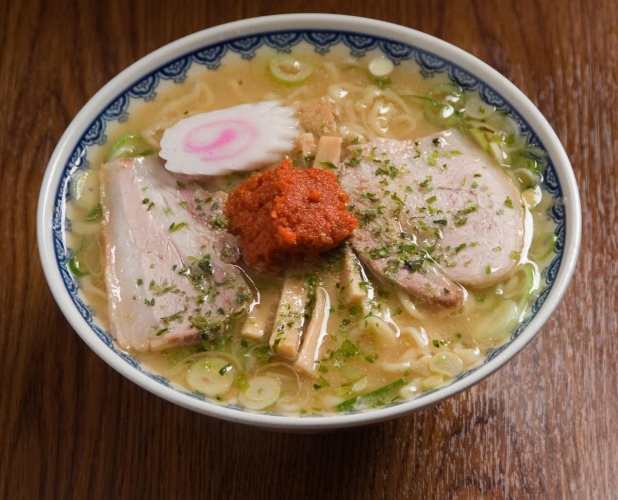
How Many Bowls of Iwate's Famous Wanko Soba Can You Eat?
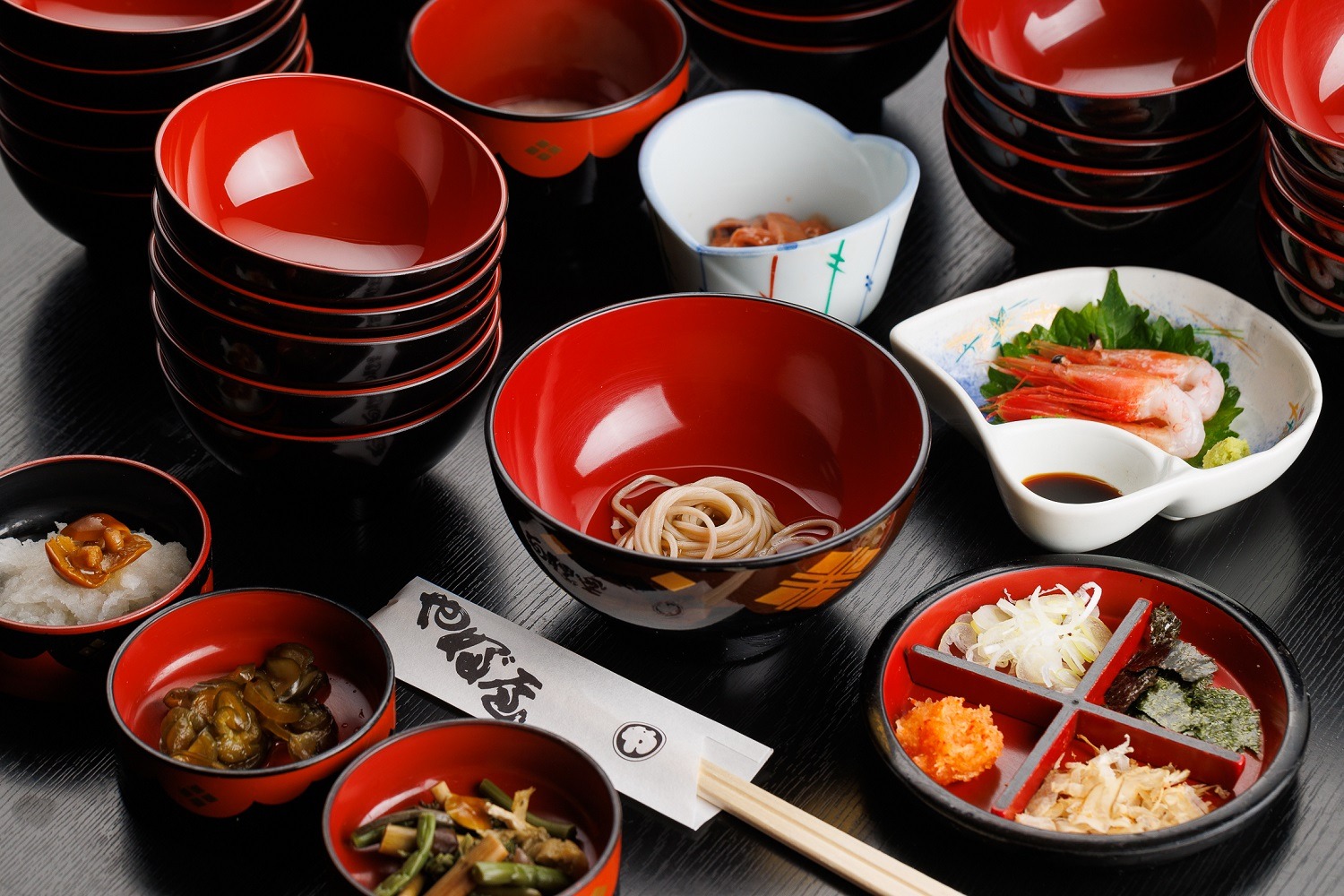
Wanko soba is a dish where you eat soba noodles from a small bowl in front of you, and the server keeps adding more soba to the bowl, allowing you to eat as many bowls as you like until you're satisfied. There are various theories about its origin, one of which traces it back to Hanamaki City during the Edo period.
When Lord Nanbu Toshinao, the feudal lord of the Nanbu domain, visited Hanamaki Castle (in Hanamaki City, Iwate Prefecture), he was served a small portion of the local specialty soba in a lacquered bowl. He enjoyed it so much that he asked for seconds multiple times. Due to the local dialect in Iwate, which adds "ko" to the end of words, the soba served in lacquered bowls (“owan”) came to be known as "owanko soba," which later evolved into "wanko soba."
The wanko soba served today offers a glimpse into regional characteristics. For example, Morioka City is characterized by a playful style where servers rhythmically encourage diners with chants like “Hai Jan Jan!” and “Hai Don Don!” However, in Hanamaki City, there are no chants as wanko soba was a hospitality dish for the lord. In the Hiraizumi and Ichinoseki areas, the Moridashi style is famous, where bowls filled with soba are lined up on a tray and you can enjoy at your own pace.
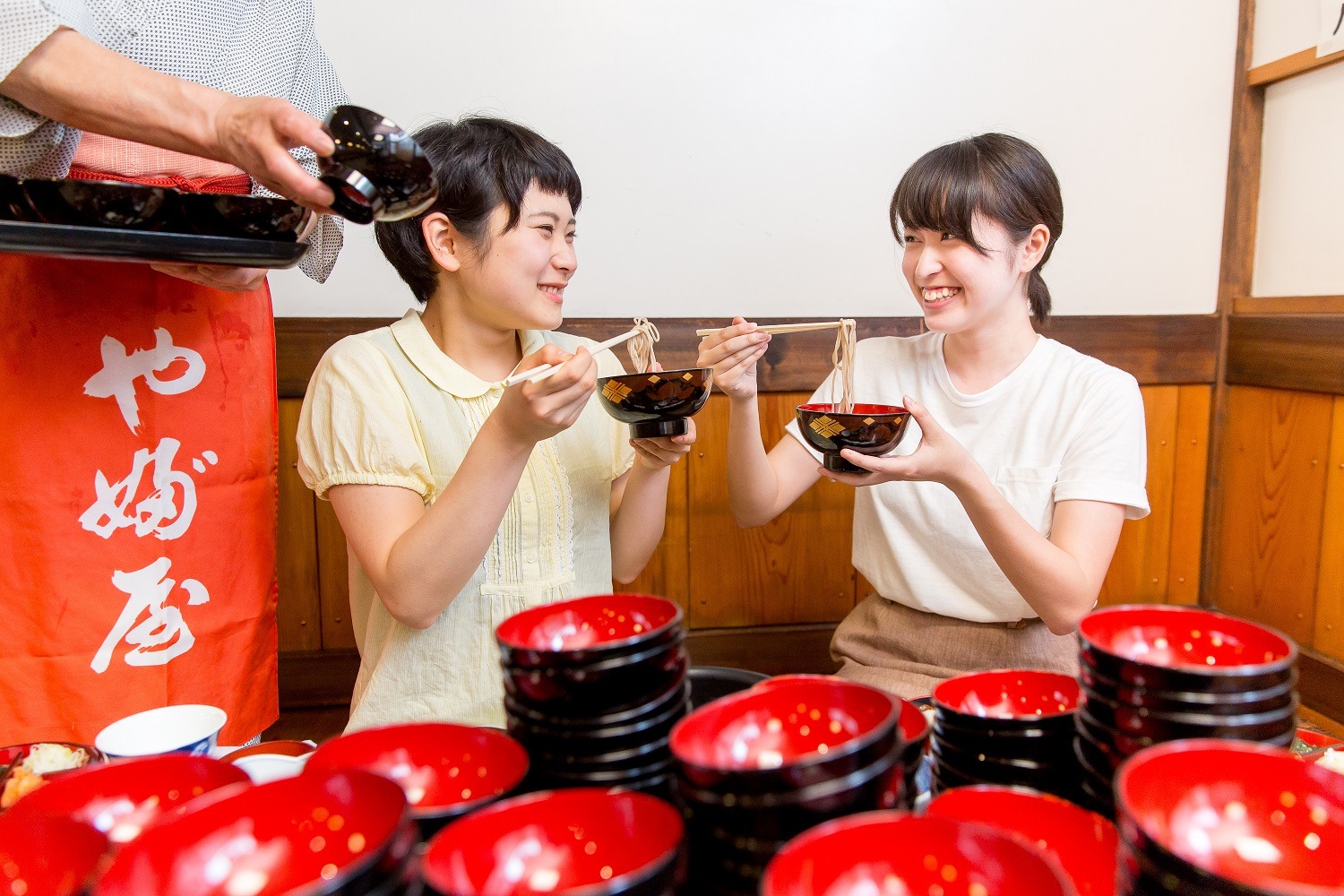
A typical serving of wanko soba consists of a small portion of soba noodles dipped in hot broth and served in a small bowl. It is said that 10-15 bowls of wanko soba are equivalent to one regular serving of soba noodles. On average, adult men consume around 50-60 bowls. One of the joys is watching the bowls pile up as you take each mouthful. Some restaurants offer a variety of condiments and side dishes to accompany the soba, allowing you to enjoy different flavors. If a server is present, covering your bowl with the lid indicates you've finished your meal. So, how many bowls have you been able to stack up?
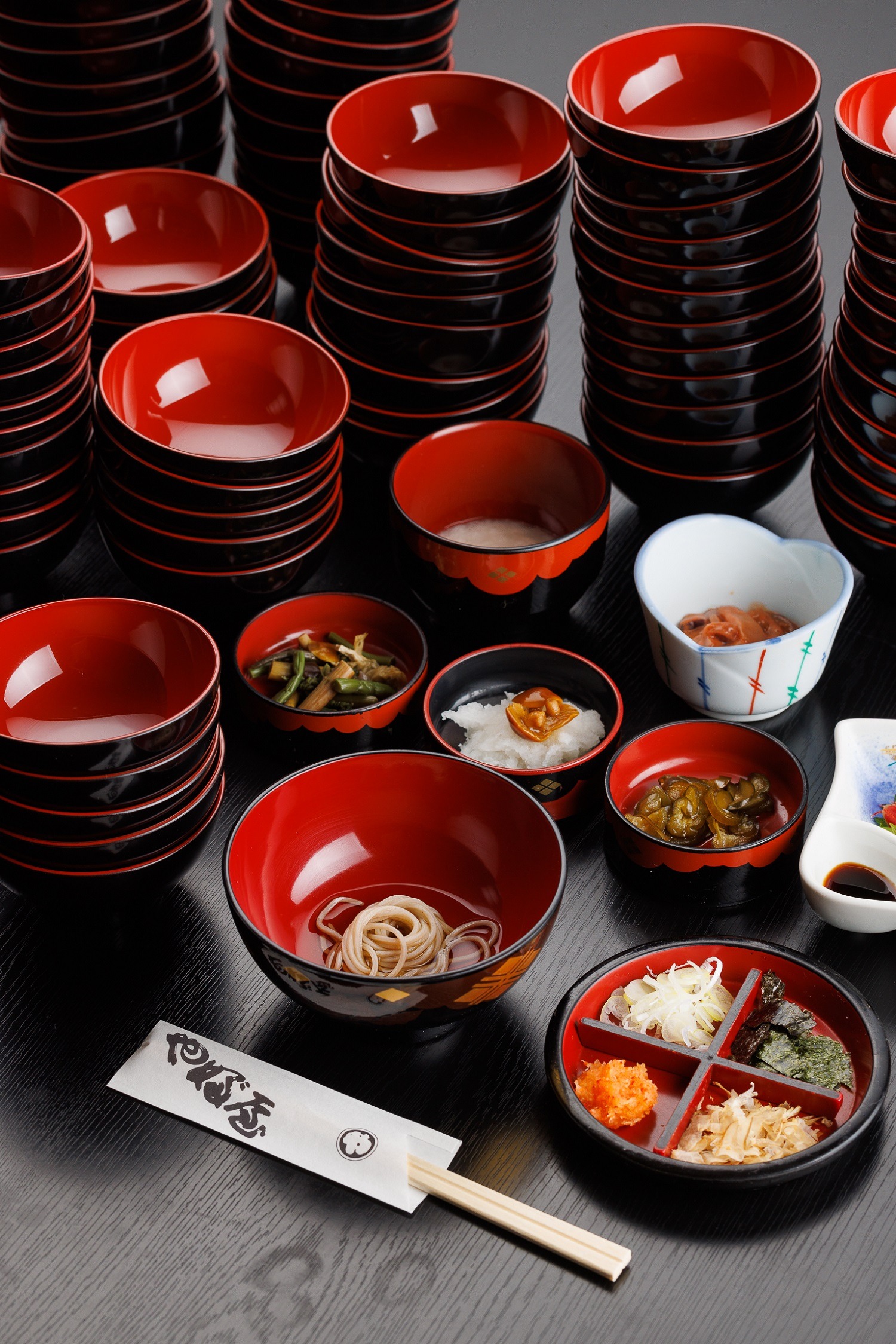
It's fun to see the bowls pile up, so it’s easy to end up eating a lot of wanko soba. Once you've finished your meal, your stomach will be full and your body might be sluggish. To promote digestion, consider taking a stroll outside the restaurant.
We recommend you take a stroll through Morioka City, the capital of Iwate Prefecture. Morioka was featured as the second city after London in the "52 Places to Go in 2023" list published by The New York Times. The magnificent view of Mt. Iwate, which can be seen from the meandering river and bridges in the city center, is beautiful. There are also buildings from the Taisho period (1912-1926) that exude a blend of Japanese and Western styles, traditional inns that evoke a sense of history, and cultural hubs such as cafés, bookstores, and jazz cafés. With a population of approximately 300,000 people, this compact city is considered a “walkable gem” that sets itself apart from major cities due to its unique and diverse attractions.
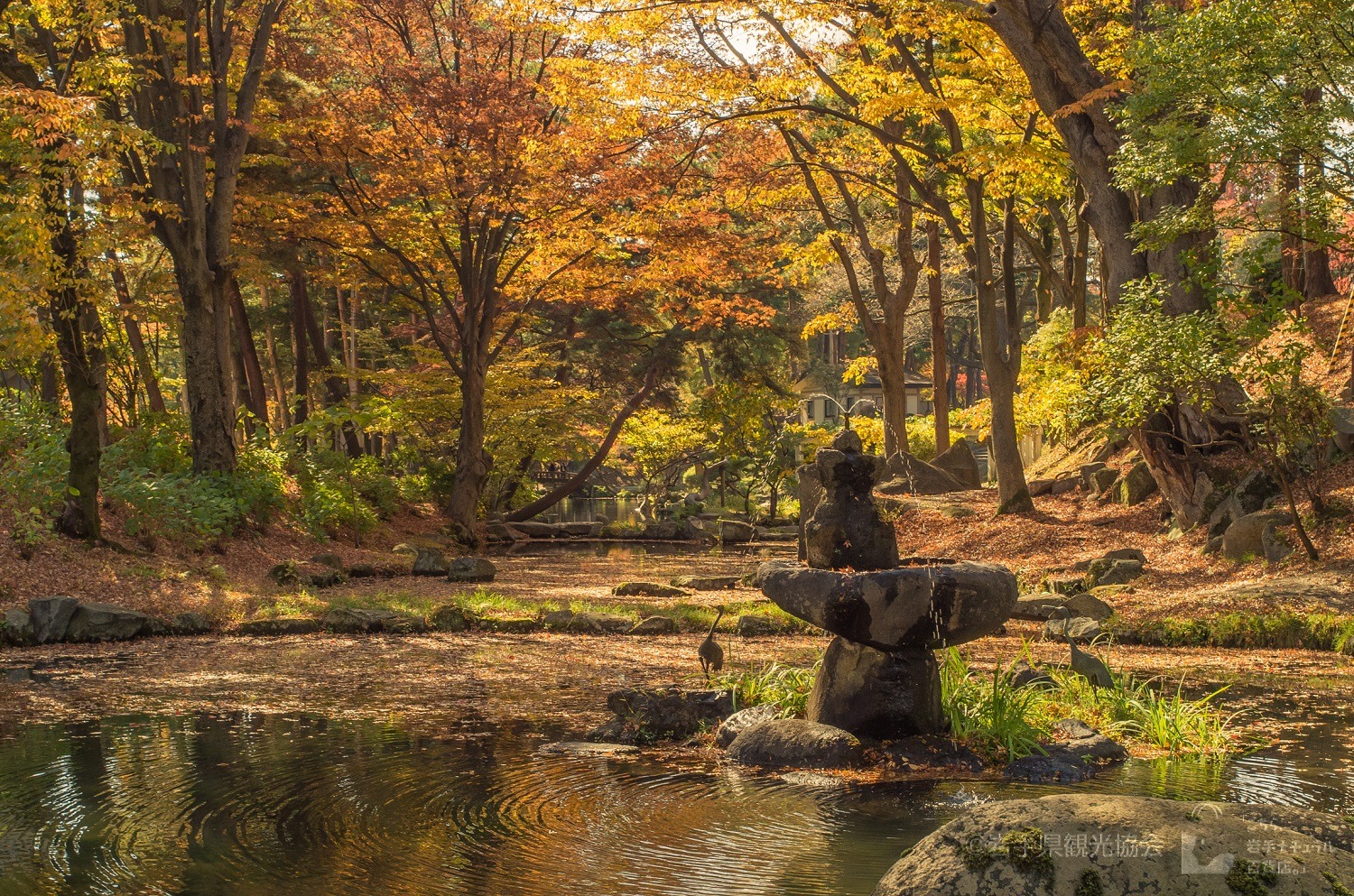
Recommended walking routes include the Kaiunbashi Bridge, where you can get great views of Mt. Iwate; located near JR Morioka Station, where the Shinkansen bullet train arrives and departs and the Zaimoku-cho district, the Morioka Castle Ruins Park area, where you'll find a mix of townhouses, modern buildings, and retro coffee shops; and the Teramachi-dori street, where temples line the road with cobblestone-like pathways and streetlights using Nambu ironware (Nambu tekki). Enjoy a leisurely stroll through Morioka's streets, taking a break for coffee along the way.
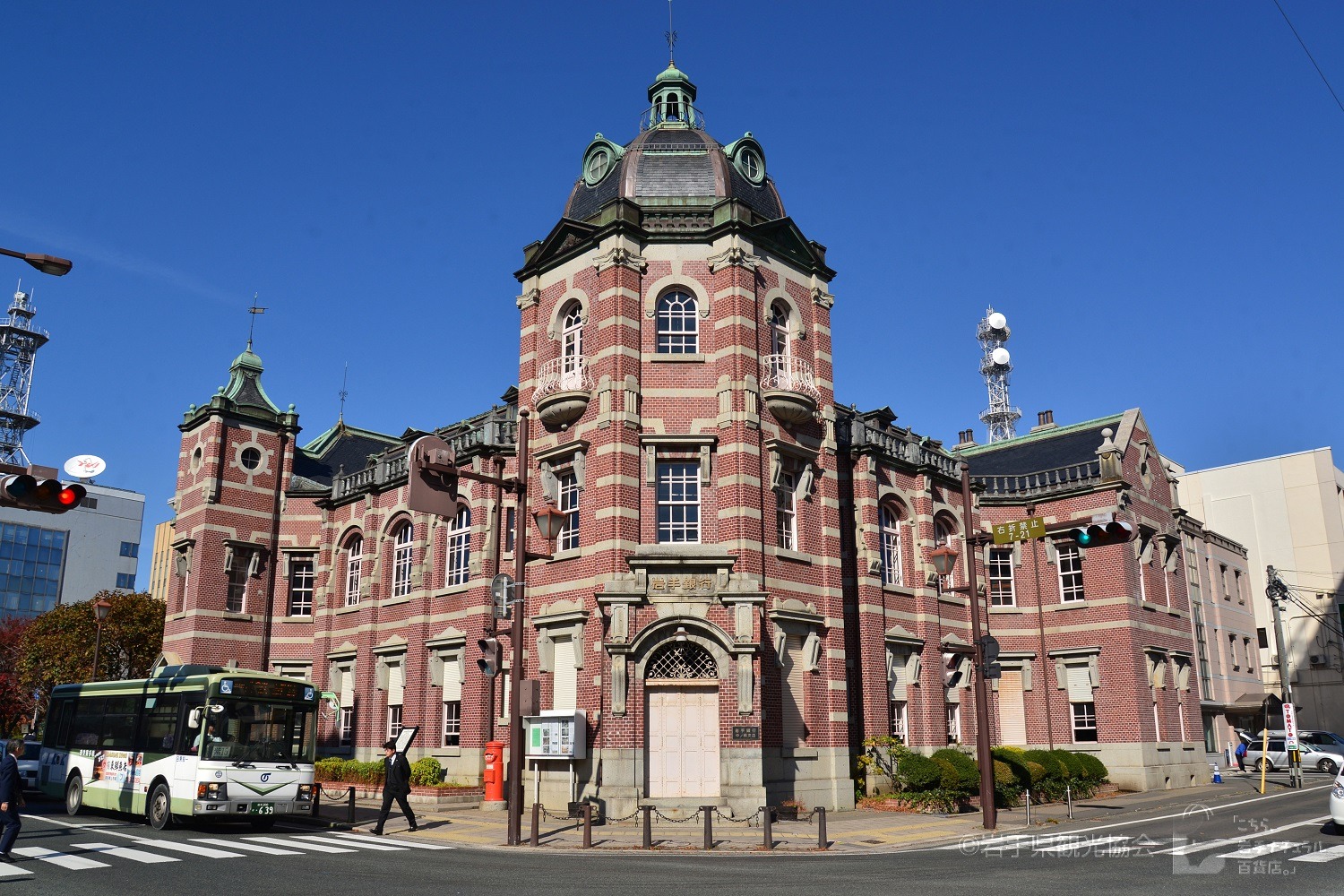
Inaniwa Udon: Combining Delicious Taste and Amazing Presentation
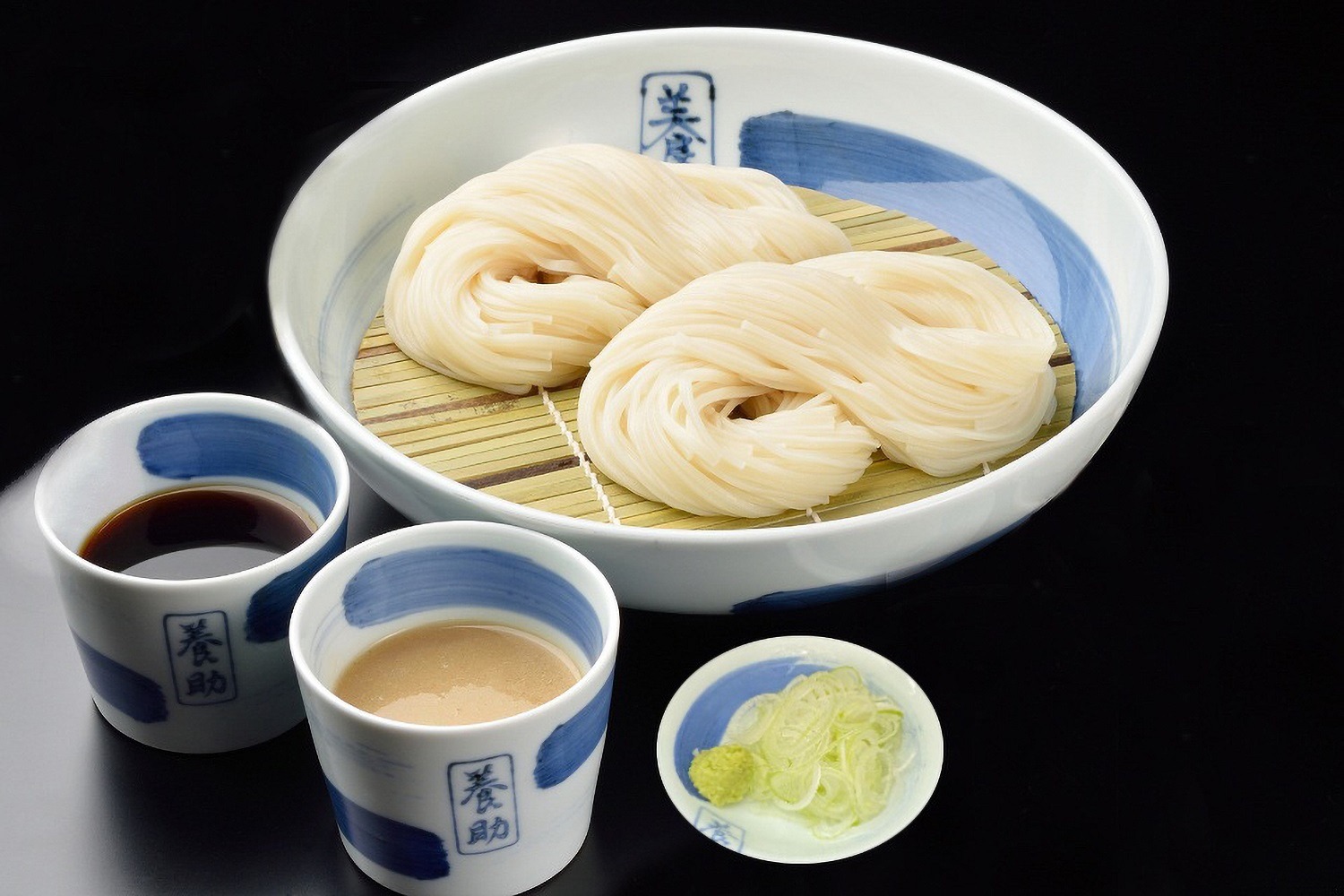
Akita's Inaniwa udon, renowned as one of Japan's three great udon varieties alongside Kagawa's Sanuki udon and Gunma's Mizusawa udon, originated approximately 350 years ago in the Inaniwa area in Yuzawa City, Akita Prefecture.
The Inaniwa area is an area with heavy snowfall, where snow remains for half of the year. To cope with the harsh winters, people in this region have been cultivating wheat for centuries and using it as a preserved food source. During this time, a local resident named Ichibei Sato began producing dried udon using locally sourced wheat flour. The manufacturing method, which has been passed down as a cottage industry since the Edo period, was publicly disclosed in the Showa era, and the production volume of Inaniwa udon increased significantly, eventually becoming a famous specialty of Akita.
Despite the growth in production, the process of making Inaniwa udon remains rooted in the handmade artistry and the relentless pursuit of flavor enhancement, a tradition established and preserved by its forebears, and passed down through generations. Wheat flour and saltwater are kneaded, flattened, cut, rounded, stretched, matured, and dried, all over a period of approximately four days, with every step meticulously carried out by skilled artisans. Only after this rigorous process is complete can the Inaniwa udon be considered truly finished.
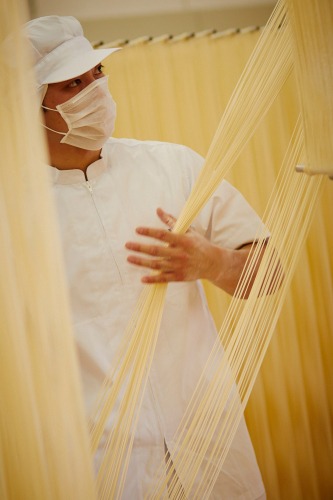
To fully appreciate the flavors of Inaniwa udon, it is recommended to first try it cold and dipped in broth. Upon placing the slightly thin, flat noodles into the dipping sauce and taking a bite, you'll be instantly captivated by the noodles' smoothness. Then, you'll experience a firm and substantial texture, even more pronounced than what meets the eye. Finally, the silky-smooth, exquisite texture is the true essence of Inaniwa udon. Additionally, try lifting a strand of the boiled noodles with your chopsticks and holding it up to the light. You'll notice the beautiful milky-white hue, as if the surface is translucent. The visual appeal of Inaniwa udon is a testament to the traditional craftsmanship, making it a true work of art.
At the manufacturing plant in Yuzawa City, the birthplace of Inaniwa udon, tours are available that allow visitors to experience the production process up close. At the Sato Yosuke Shoten factory, visitors can observe the manufacturing process of Inaniwa udon, which is entirely crafted by skilled artisans without the use of any machinery, through a glass window.
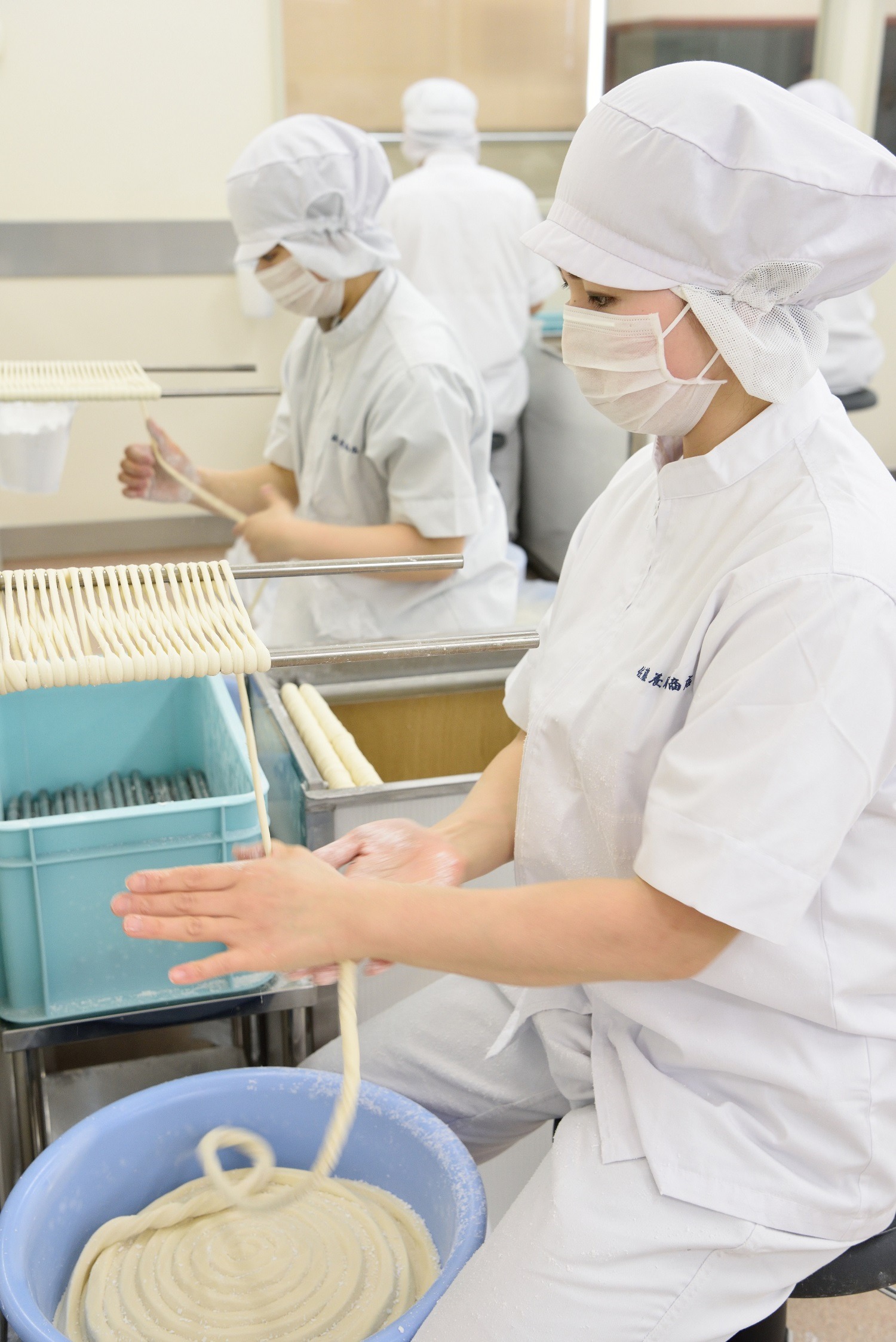
After the factory tour in Yuzawa, enjoy sightseeing and souvenir shopping in the city. By taking a bus from the city center, you can visit Oyasukyo Gorge and witness the geyser, a rare spectacle worldwide.
Oyasukyo Gorge is a V-shaped gorge that has been eroded by the rapid flow of the Minase River, with a depth of approximately 60 meters. As you descend the staircase and walk along the promenade, you'll approach the area where hot water and steam vigorously spout from the cracks in the walls. This unique terrain exposes the cracks in the geothermal reservoir where steam and hot water accumulate. Visitors can also observe the steam spouting from the gorge by crossing the Kawarayu Bridge that spans over it.
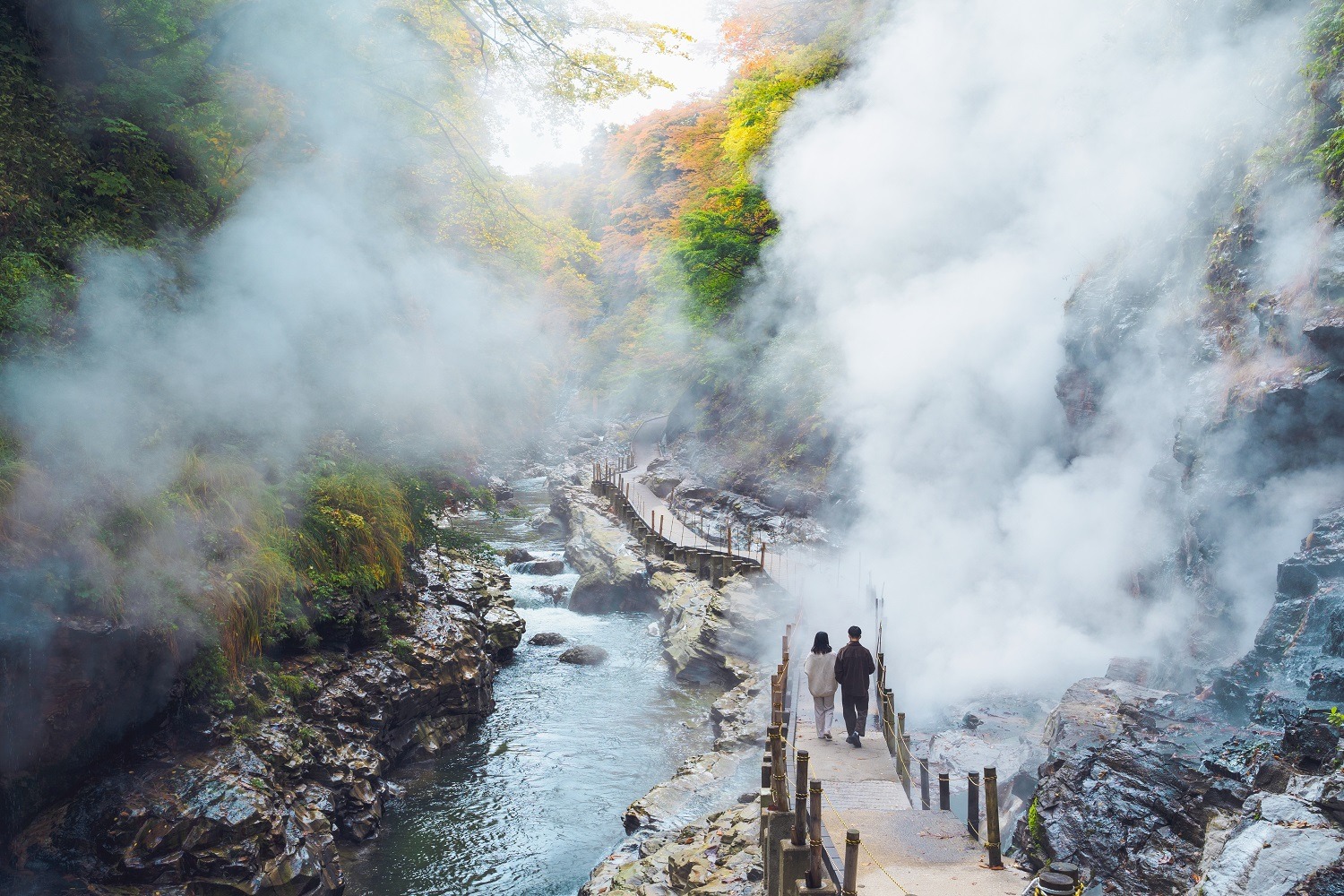
For souvenirs we recommend Kawatsura Lacquerware, which has a history of 800 years in Yuzawa. It's finished with a technique called Hananuri (flower coating), which involves grinding domestically produced wood that has been smoked and dried, and then lacquered without polishing, giving it a beauty and durability that will last a lifetime. The elegant black and vermilion lacquered bowls emit a refined luster, making them the perfect vessel for enjoying the pure white Inaniwa udon noodles. This great souvenir which embodies the essence of Yuzawa is bound to be a hit!
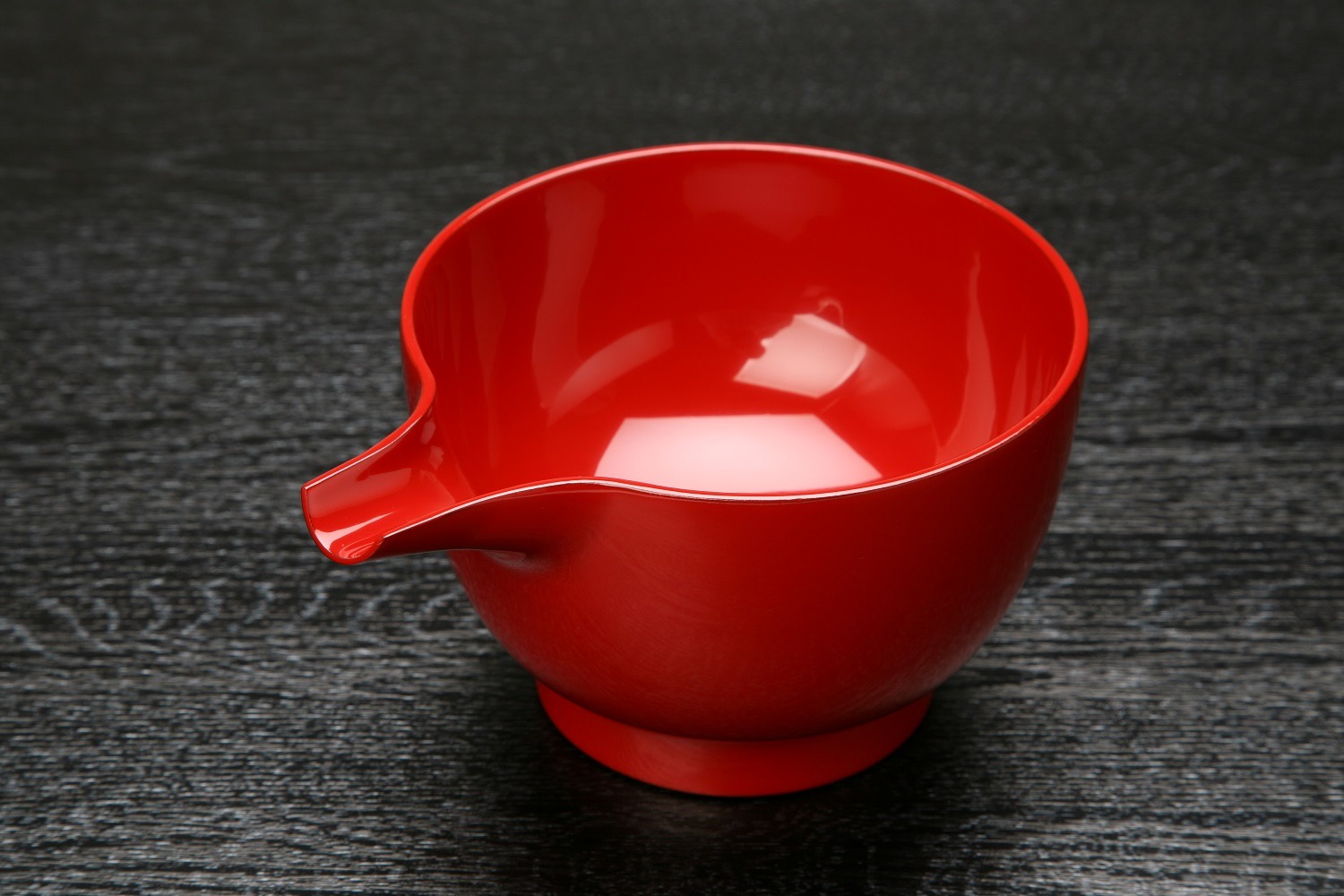
Yamagata Offers a Diverse Selection of Ramen and is the No. 1 Consumer of Ramen in Japan!
Among the prefectural capitals and ordinance-designated cities in Japan, Yamagata City in Yamagata Prefecture has the highest per-household expenditure on dining out for ramen, (According to the Household Survey by the Ministry of Internal Affairs and Communications). Yamagata is renowned throughout Japan as the mecca of ramen, a dish that has sparked a global craze.
There are several reasons why Yamagata has become a ramen kingdom. One of them is that not only ramen shops, but also soba restaurants offer ramen. Generally, soba and udon are the main dishes served at soba restaurants, but in Yamagata, ramen (Chuka soba, lit. “Chinese Soba”) is almost always on the menu. Moreover, the quality of ramen is high in every shop, and there are even soba restaurants that are more popular for their ramen. The second reason is that ramen is considered a hospitality dish. In Yamagata, it is customary to order ramen for relatives or guests who come to visit, or to go to soba or ramen shops to eat. Thirdly, it is said that people don’t stop eating ramen even in the hot summer because they offer cold ramen with cold noodles and broth.
The first restaurant to introduce cold ramen was the soba restaurant Sakaeya Honten in Yamagata City. Inspired by customer requests for cold ramen, they created a flavorful dish featuring a cold broth, and firm-textured noodles.
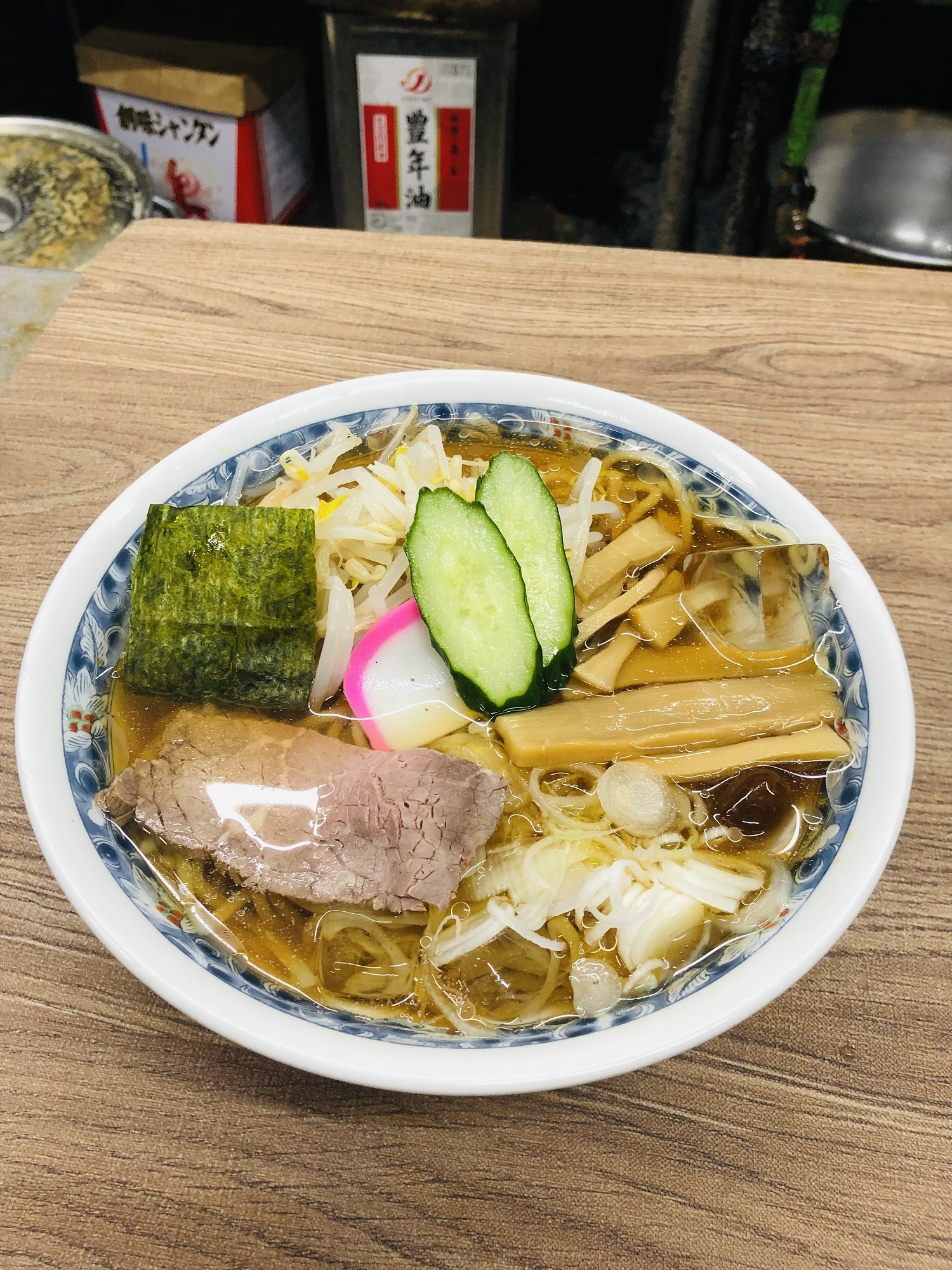
Another Yamagata ramen, originating from soba restaurants, is the Tori Chuka. It features a Japanese-style dashi broth that complements soba, combined with Chinese noodles and seasoned chicken toppings. Initially, it was a staff meal at the soba restaurant Suisha Kisoba in Tendo City. However, due to word-of-mouth recommendations, it became a secret menu item offered to customers and quickly turned into a massive hit.
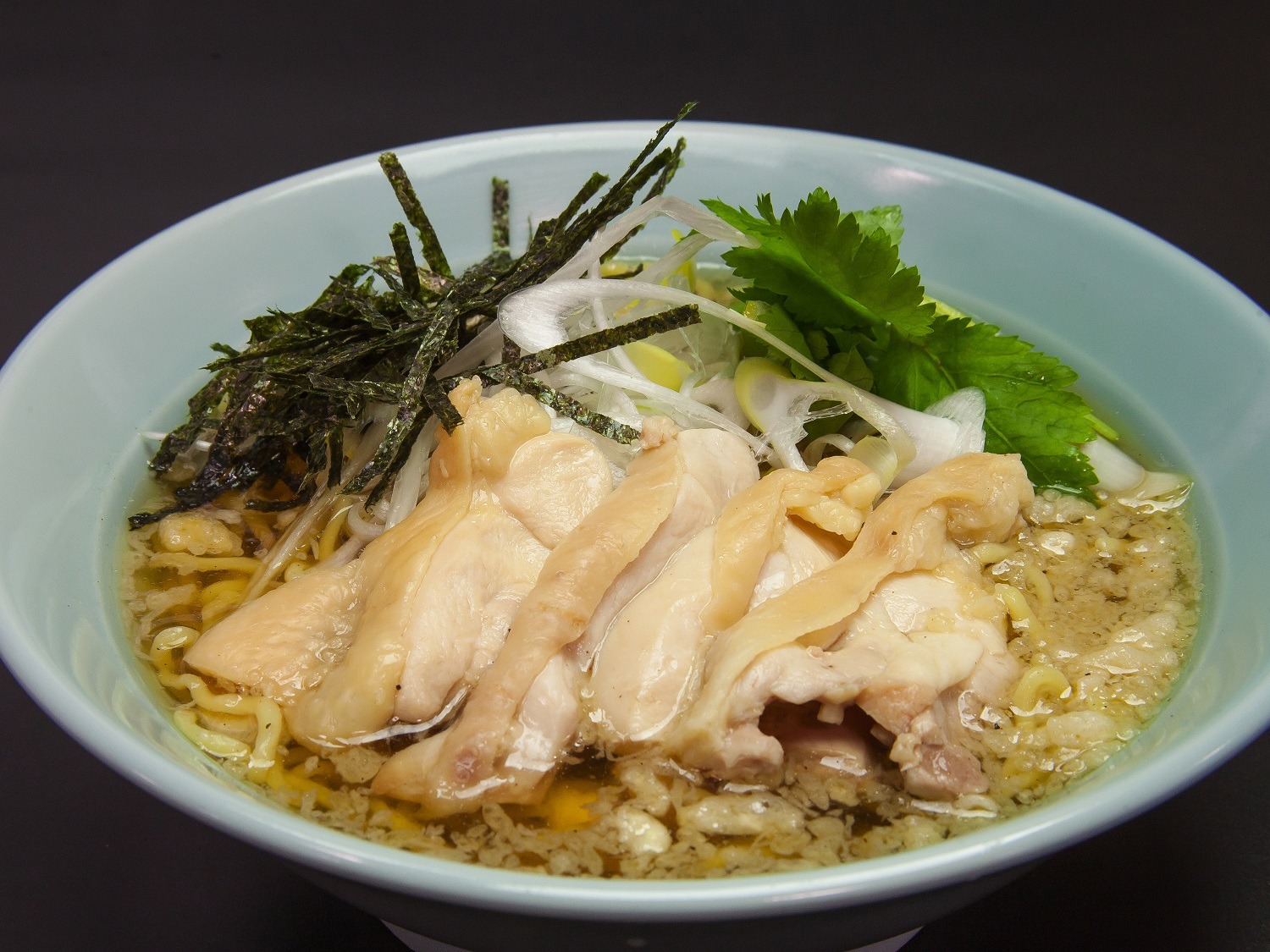
In addition, Yamagata Prefecture is home to a diverse range of unique regional ramen. For example, there's the Akayu Spicy Miso Ramen served in Nanyo City in the southern part of the prefecture. This is an original creation from the ramen shop Akayu Ramen Ryu Shanghai. Back in the 1950s and 60s when soy sauce ramen was the norm and well before Sapporo miso ramen gained fame, they had been developing and serving miso ramen. They melt the Kara-miso (spicy miso paste) with locally sourced chili peppers into a rich and flavorful broth, which pairs excellently with thick, curly noodles.
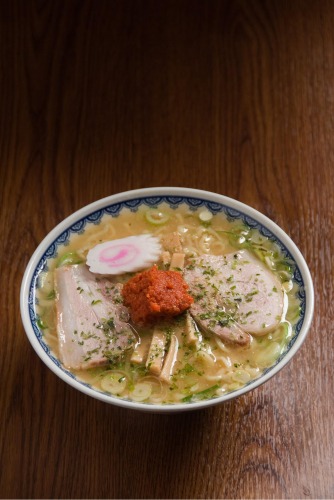
Sakata City on the coast of the Sea of Japan has its own local ramen called Sakata ramen. The broth boasts a refreshing flavor with a hint of seafood, befitting of a port town. The standard noodles are medium-thin and wavy with high water content designed to complement the soup. Furthermore, approximately 80% of ramen establishments in the city use homemade noodles. A crucial topping for Sakata ramen is the wonton, with its paper-thin skin that is almost transparent, providing a delightfully soft and tender texture.
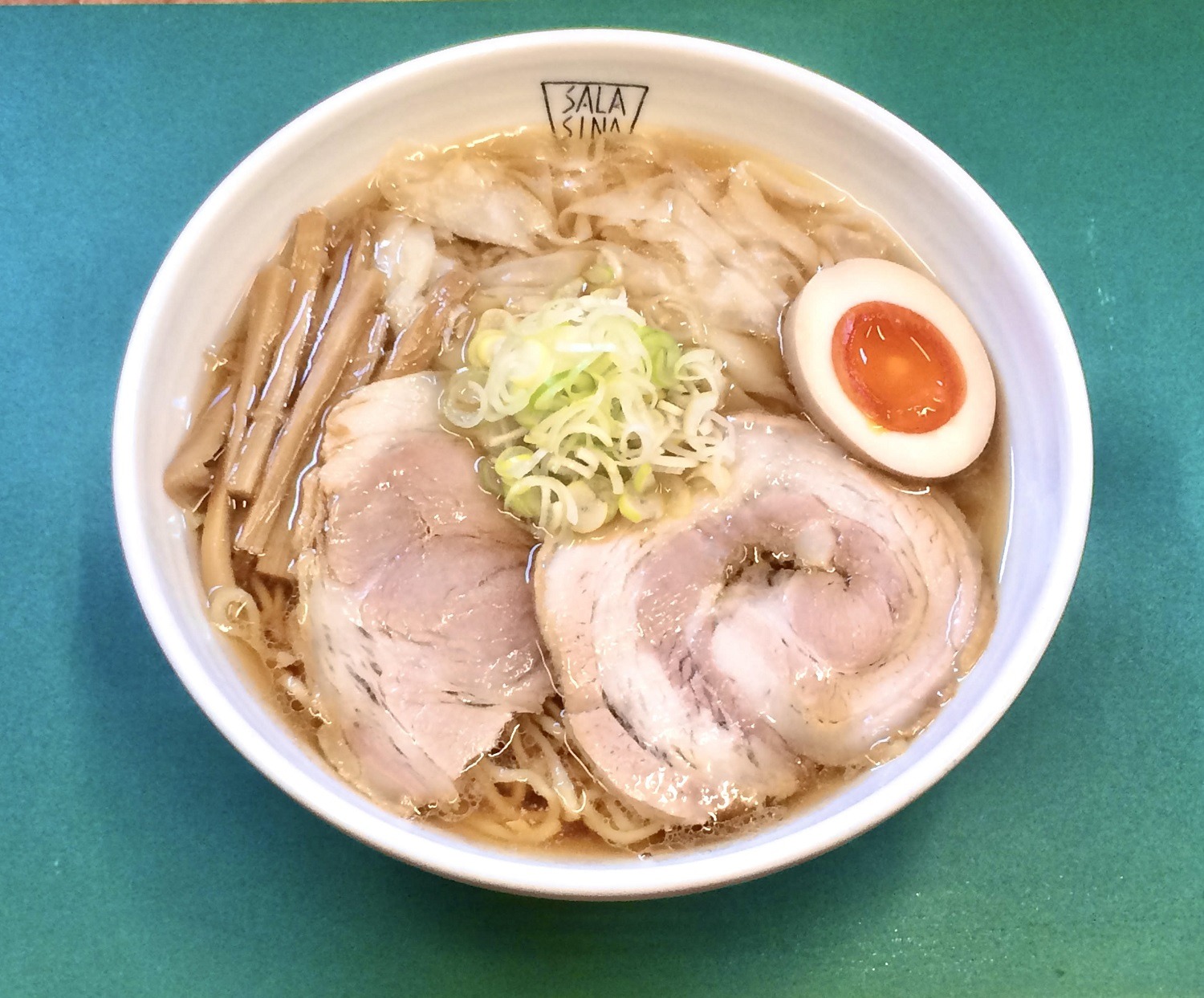
In the southern part of Yamagata Prefecture lies Yonezawa City, which is known for its Yonezawa ramen, which features a soy sauce-based broth that uses chicken bones and dried sardines, paired with hand-kneaded thin, curly noodles. In the northern city of Shinjo, there is Torimotsu ramen, which features a chicken bone-based soy sauce broth with fresh simmered offal on top. These regional ramen varieties, reflecting the local culture and character, attract many ramen enthusiasts from Japan and abroad to visit Yamagata.
When embarking on a ramen journey in Yamagata Prefecture, we highly recommend visiting the hot springs. Yamagata is known as one of Japan's premier Hot Spring destinations, with hot springs located in all 35 cities, towns and villages! There are numerous traditional Japanese hot springs, from hot spring villages that preserve the traditions of therapeutic bathing to secluded hot spring inns nestled amidst nature.
After enjoying a bowl of cold ramen in Yamagata City, take a trip to Zao Onsen, located in the southeast part of the city. This hot spring, which is located at an altitude of 900 meters, has highly acidic and sulfuric hot spring water. Soaking in the beautiful blue-tinged milky white water will warm your body from the core and lead to smooth and supple skin.
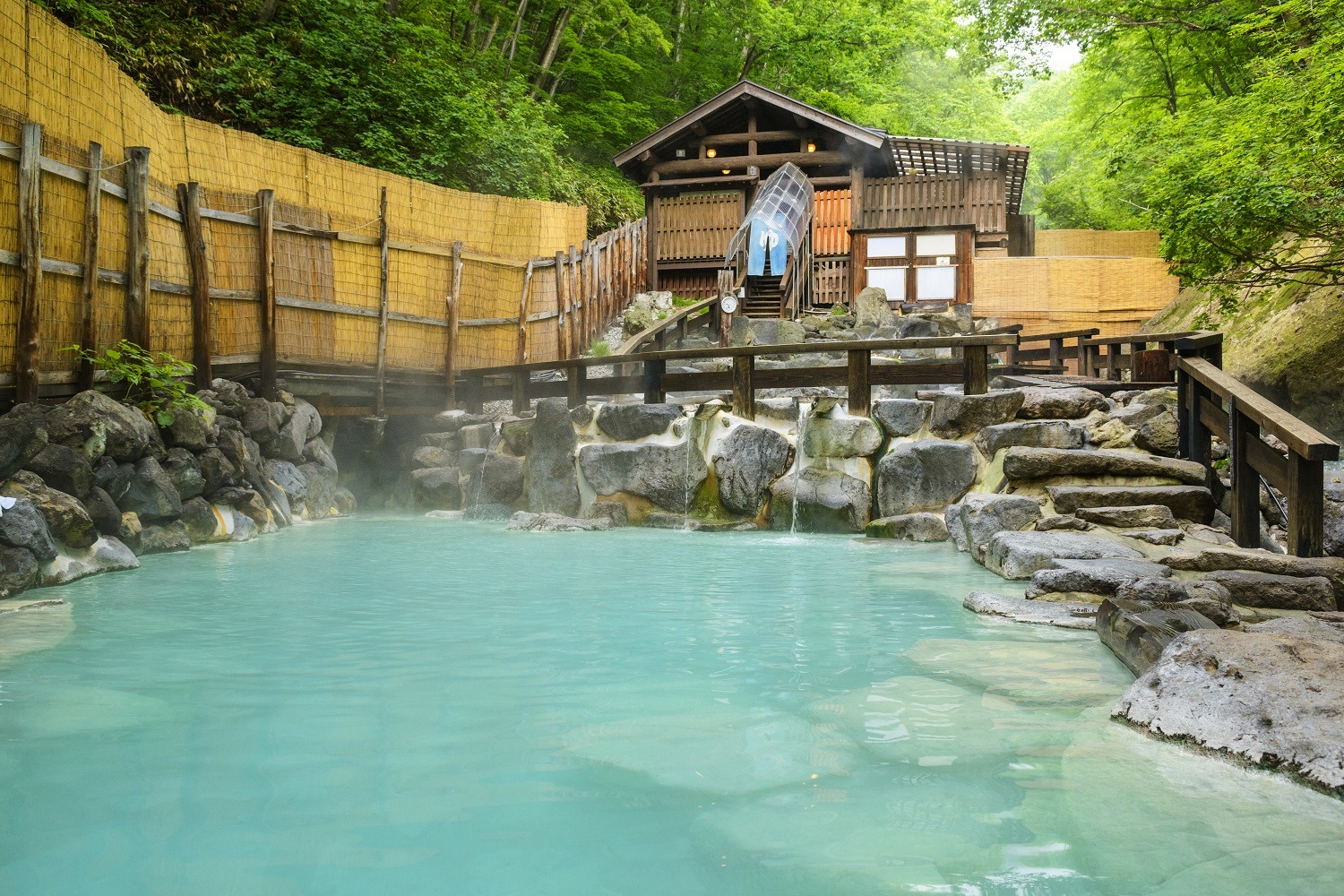
Near the main branch of Akayu Ramen Ryu Shanghai, known for its Akayu Spicy Miso Ramen in Nanyo City, you'll find Akayu Onsen, which has history dating back to when the hot springs were discovered in 930. Akayu Onsen is a nostalgic hot spring village that still preserves the ambiance of a post town along Oshu Kaido Street. The hot spring water is rich and gentle, renowned for its warming properties.
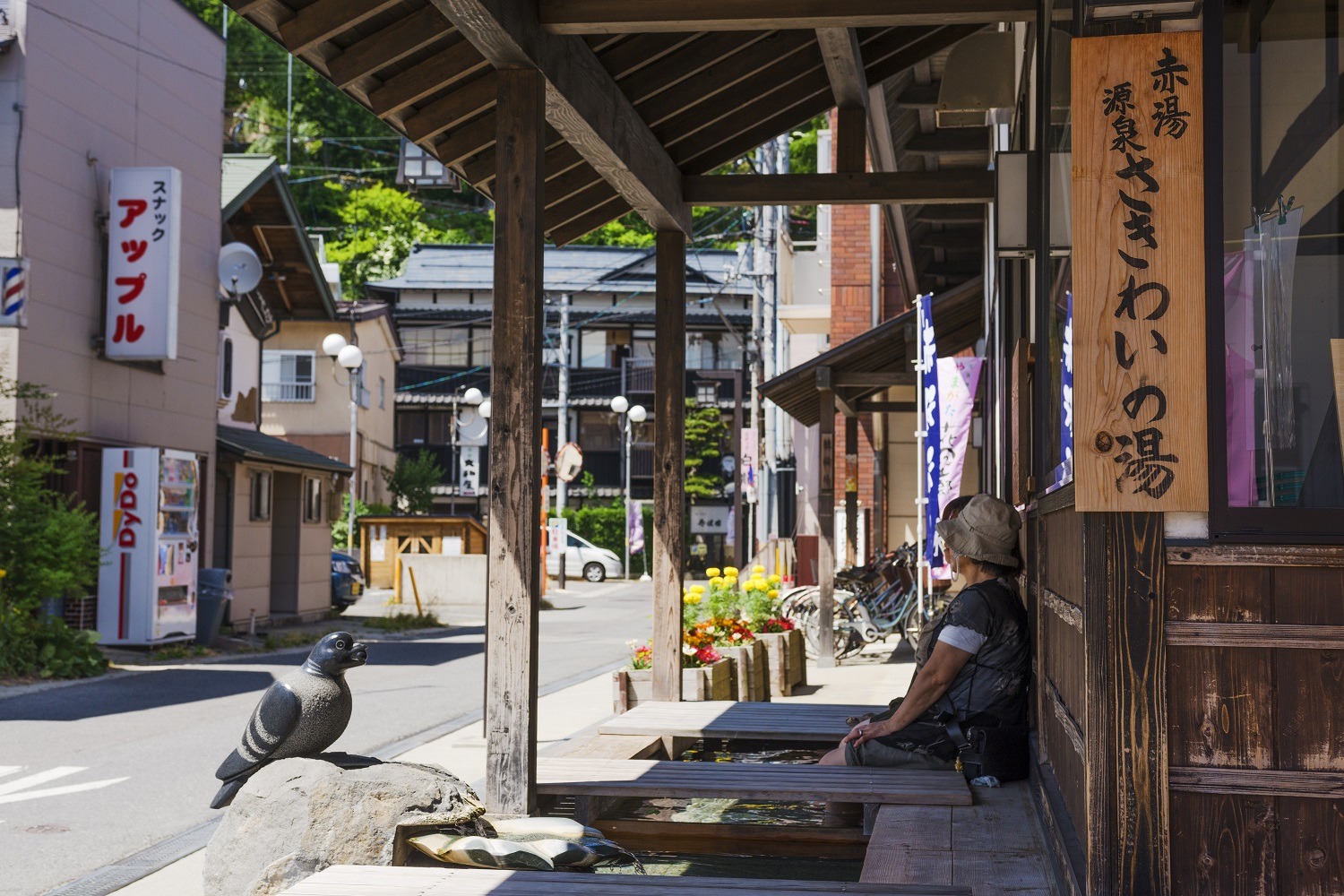
After enjoying Yonezawa ramen in Yonezawa City, visit Onogawa Onsen, known as Yonezawa's Okuzashiki (backroom). Onogawa Onsen is a rare hot spring in Japan where all baths feature 100% free-flowing hot-spring water. Despite being neutral in pH, this hot spring is rich in metasilicic acid, which is commonly used in skincare products. It is known as a hot spring with skincare properties. In addition to bathing, you can also drink the spring water and anticipate its beneficial effects.
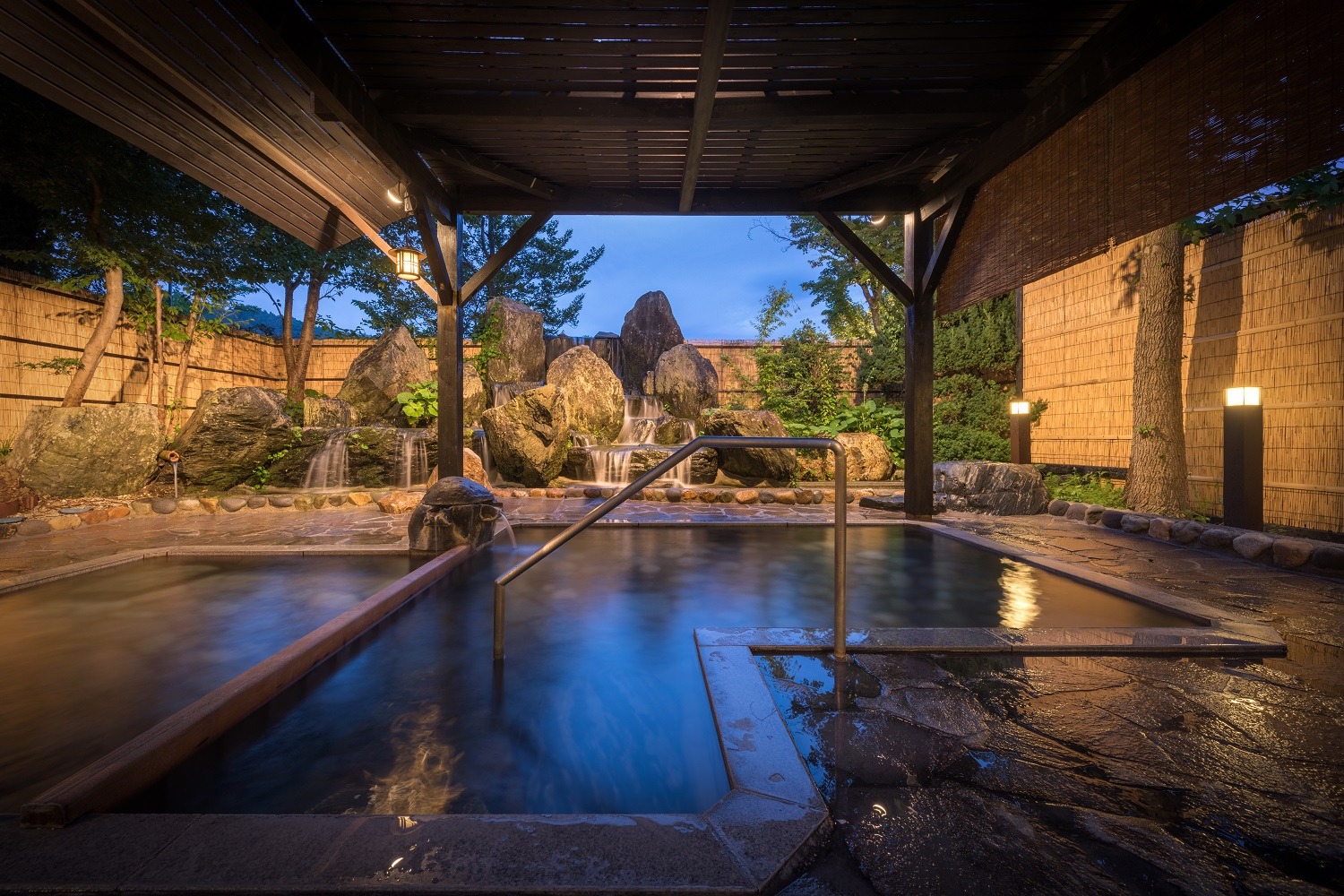
We recommend you stay overnight at one of the hot spring inns throughout the prefecture and indulge in a leisurely soak, or take a casual day trip to enjoy hot spring hopping!
Learn the Japanese Etiquette for Eating Noodles and Savor the Local Varieties
While some regions in the world consider it rude, it's customary in Japan to slurp noodles (especially soba noodles) as you eat them. There are various theories as to why this eating style originated, but one plausible explanation is that slurping noodles allows air to be drawn in along with the noodles, enhancing the aroma and flavor of the noodles in your mouth.
The key to this method is to use your chopsticks to pick up a small amount of noodles and slurp them down in one bite. This not only makes for an aesthetically pleasing experience but also allows you to fully savor the flavors of the noodles and the broth.